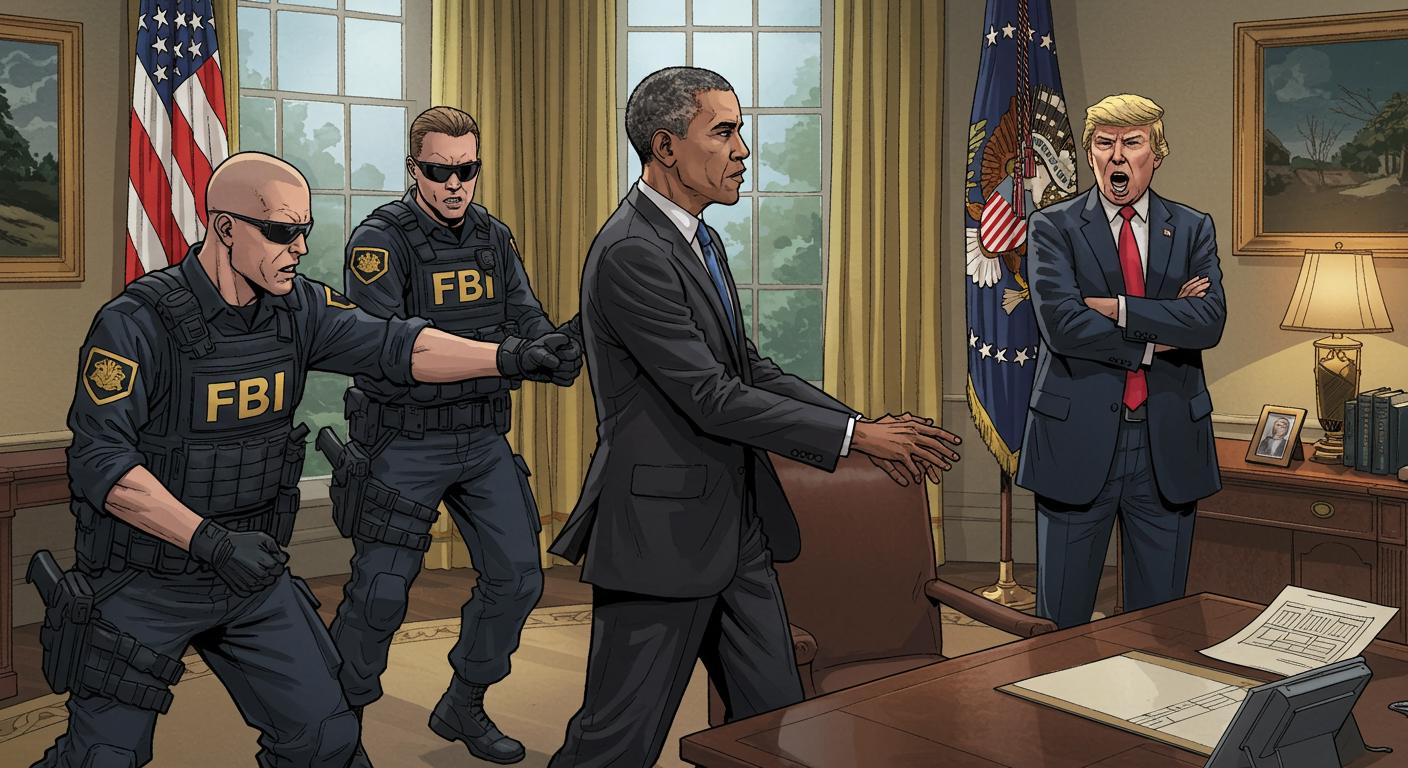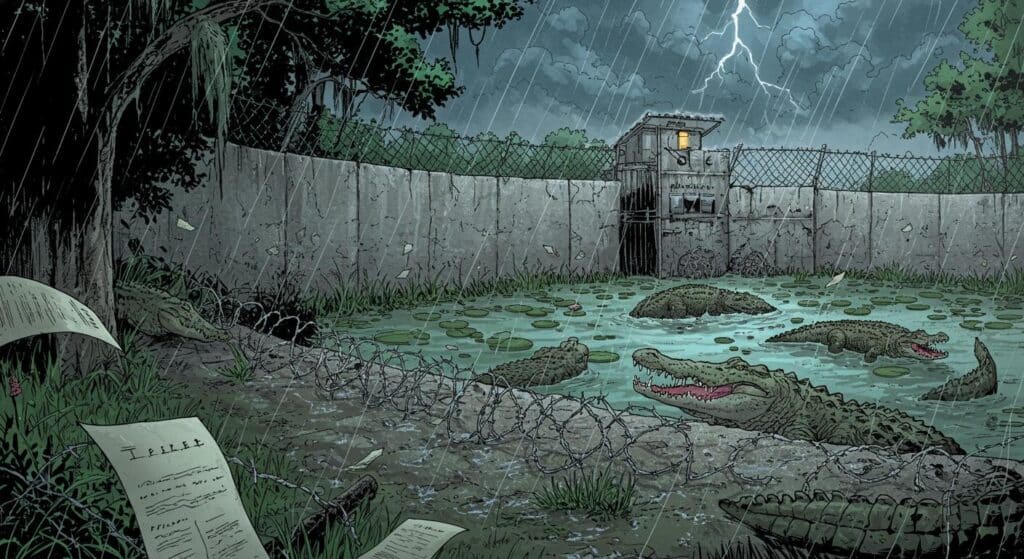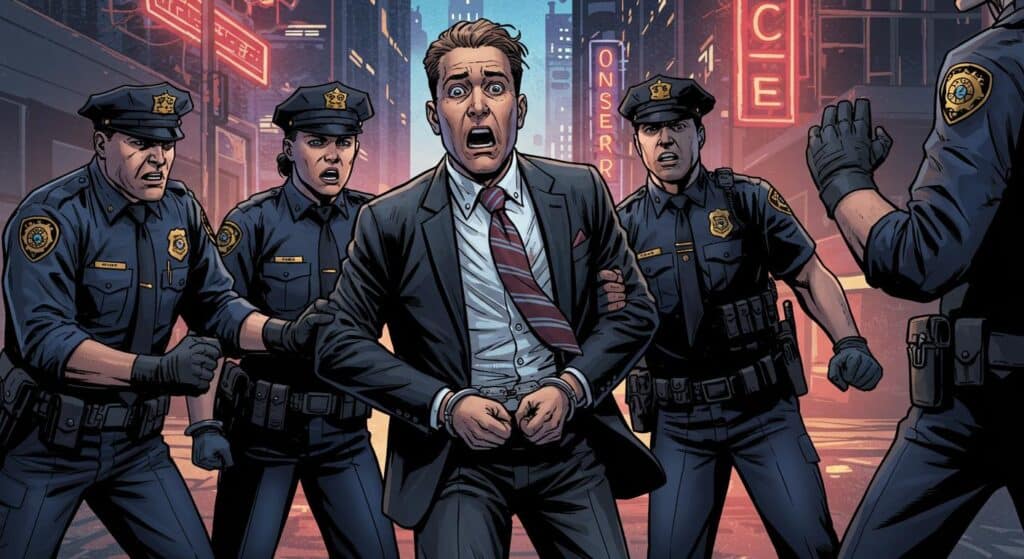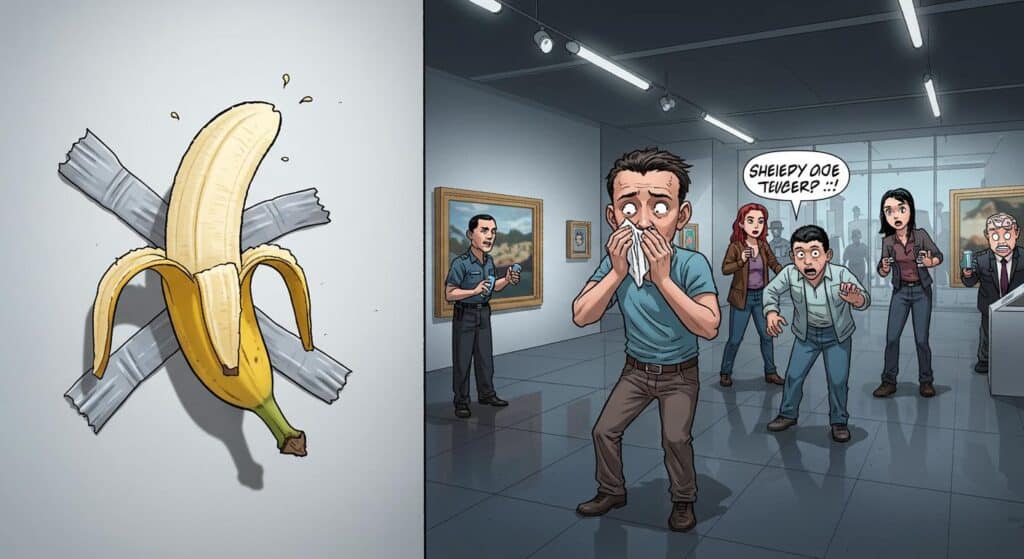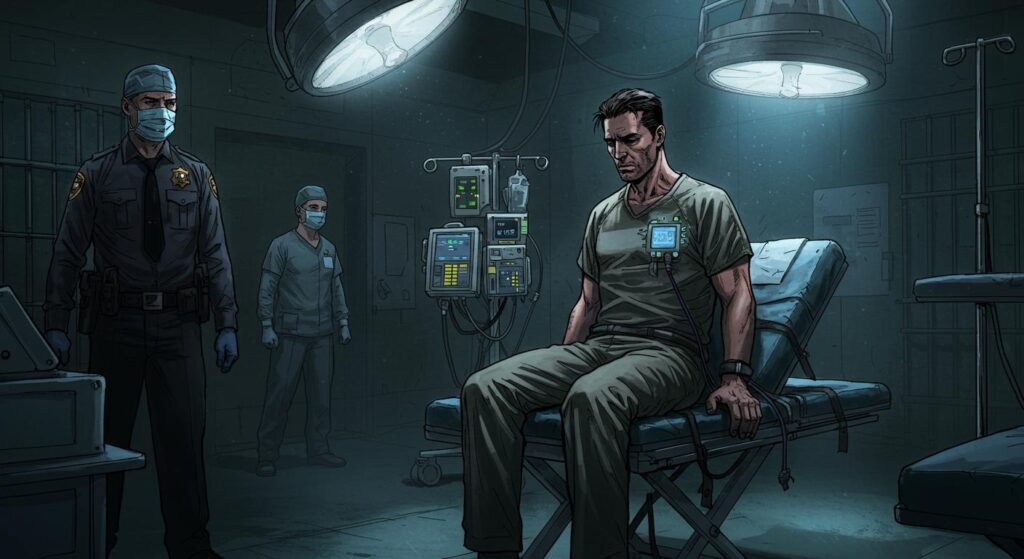Every week offers up its own bouquet of digital oddities, but this week’s high-water mark in surreality comes courtesy of a former U.S. president himself. In a moment almost too on-the-nose for even seasoned internet archivists, Donald Trump circulated an AI-generated video portraying the FBI arresting Barack Obama in the Oval Office—a slightly uncanny scene that manages to walk the line between satire and synthetic political theater.
AI Fantasies and Political Theater
According to the Times of India, Trump posted this fabricated mini-drama on his Truth Social platform. The video—originally a TikTok creation—shows Obama handcuffed by FBI agents right where the Resolute Desk usually sits, with Trump off to the side grinning approvingly. The structure of the video itself is a nod to both political meme and internet troll: it opens with various Democratic leaders, including Barack Obama and Joe Biden, solemnly pronouncing, “No one is above the law.” This is followed by a clown-faced Pepe the Frog meme honking a red nose, and then an AI Obama in handcuffs, later making appearances in an orange jumpsuit in prison hallways and behind cell bars. The soundtrack, as observed by a Daily Kos report, drifts into something reminiscent of the Village People—a flourish that’s nearly as hard to overlook as the video’s pixelation.
Despite—or perhaps because of—its artificiality, the video went viral across Trump’s following. The Times of India documents how the social media response fractured, with supporters championing the post as a fantasy worth manifesting, while critics decried it as deliberately deceptive and needlessly provocative.
The Deepfake’s Newsticker: Context or Distraction?
Interestingly, the wave of attention arrived hot on the heels of new allegations swirling around the 2016 election. Both the Times of India and NewsBreak’s writeup for The Mirror US outline recent claims made by Director of National Intelligence Tulsi Gabbard. She has asserted there is now “striking” and “overwhelming” documented evidence that former Obama officials concocted the Trump-Russia saga to undermine his presidency. Gabbard, as detailed in both outlets, says she intends to share more than 100 documents with the DOJ and FBI to support her accusations, although neither Obama nor his former officials have responded to these assertions at the time of reporting.
Against this backdrop, Trump’s AI post may serve multiple strategic purposes; critics pointed out to The Mirror US that the video lands amid “growing scrutiny over the use of AI in political messaging.” Some suggest that the timing of the video, with its unsubtle lean into visual vengeance, offers a distraction from less favorable headlines, including ongoing controversy related to the Epstein investigation, as several social media commentators implied in reaction threads.
The Line Between Farce and Alarm
Notably, the deepfake video was shared with no disclaimer indicating its fictional nature, a detail that several critics flagged as “deliberately inflammatory” in The Mirror’s reporting. While those fluent in digital culture (or just familiar with the limitations of current AI video) may instantly clock its artificiality, the fact that it arrived sans context points to a larger issue: in a post-truth media environment, even the patently made-up takes on a strange veneer of credibility—or at least provides raw material for wishful partisanship to flourish.
The Mirror US further describes how Trump added no personal commentary when sharing the video, leaving only the tagline “No one is above the law” for context. Reactions multiplied quickly, with Trump supporters applauding the tongue-in-cheek digital revenge fantasy, while opponents condemned the post both for its content and for the lack of an explicit acknowledgment that viewers were seeing AI, not reality.
Having once lived in a world where photo evidence seemed sacrosanct (even if you knew your uncle’s “fish story” was stretched), we’re now in new territory: reality, fantasy, and satire are constantly remixing themselves in the viral churn, sometimes at the hands of one-time presidents.
Closing the Book on This Week’s Surreal Sidebar
So, what does it mean when the ex-commander-in-chief borrows from the internet’s weirder creative toolbox and helps an AI daydream get its turn at viral notoriety? The boundaries between political messaging, entertainment, and misinformation didn’t just blur—they pulled out the painter’s tape and redrew themselves overnight. As NewsBreak’s recounting highlights, outrage and amusement followed close behind the original post, underscoring the friction of an era where even outlandish scenarios can find an audience ready to believe, meme, or just marvel at the spectacle.
If the real measure of modern democracy is how well we separate the peculiar from the pernicious, then weeks like this offer a test case worthy of a future case study—or perhaps just another Tumblr tag. Will politicians’ fantasies rendered in pixels become a regular campaign tactic, or does the strangeness of this week’s digital stunt suggest we’re not quite numb to the uncanny valley just yet? Cataloging the American odd this year means keeping an eye on the deepfake shelf; from what we’ve just witnessed, it’s only getting weirder.

